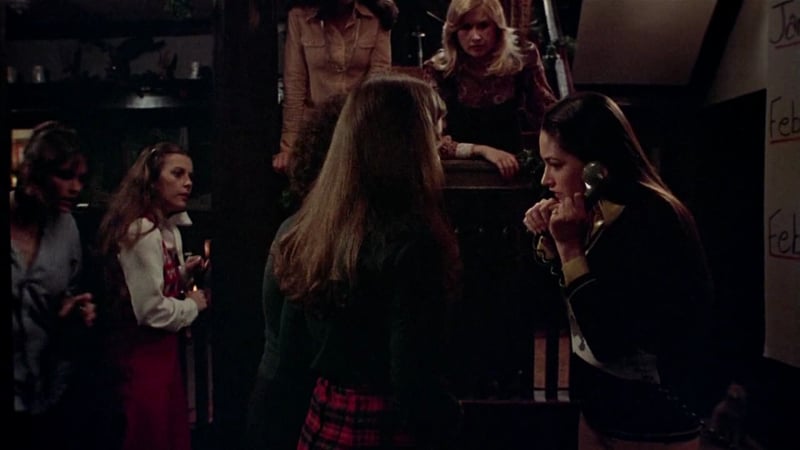If you thought A Christmas Story was the only Christmas classic on director Bob Clark's résumé, think again. Almost a decade before delivering the saga of young Ralphie and his want for a BB gun, Clark directed 1974's Black Christmas; a Yuletide-themed horror flick which became one of the most influential slashers of the 1970s. Looking back on it in the 21st Century, Black Christmas seems to be irreparably crippled by countless genre clichés, but such a criticism is erroneous since this was in fact the film which mainstreamed a lot of what's now considered to be a cliché. It came before John Carpenter's Halloween, and thus popularised such conventions as: an isolated setting, a group of college-aged victims, a murderer methodically killing people off, and so on.

As Christmastime approaches, a group of sorority sisters decide to spend their holidays on campus. Soon, their sorority house becomes terrorised by a series of increasingly perverse, violent and obscene phone calls. As a psychologically disturbed stalker takes up residence in the house's attic, the sisters begin to go missing under mysterious circumstances. The police are reluctant to treat the disappearances as genuine missing persons cases, but then a young girl is found dead in a public park, sparking the cops into action.
Looking for a Yuletide movie to get you in the Christmas spirit? Stick with Miracle on 34th Street or It's a Wonderful Life. Bob Clark's horror opus is hardly even concerned with Christmas - it's a disturbing, frightening slasher through-and-through. On top of desecrating Christmas cheer, Black Christmas also defies religious conventions with its filthy language, dark humour, violence and the way it explores its teenage characters' intemperance, sexuality and even disobedience (the subject of abortion is dealt with). A lot of the film's dedicated fans claim that Black Christmas is better than John Carpenter's Halloween, but Clark's picture not as skilful from a script perspective - the midsection drags a bit, some of the characters are flat, and the dialogue is fairly unremarkable. In the long run such aspects don't really matter though, as Black Christmas succeeds when it comes to the slasher elements.

Working from Roy Moore's screenplay, Clark's directorial efforts are masterful. The director chose to rely on mystery and an intense atmosphere to sell the terror, rather than a more obvious approach of outright gore and nudity. In fact, Black Christmas is surprisingly restrained in terms of violence - the kill scenes do not often flaunt a great deal of blood and gore. Such restraint actually works, as it amplifies the horror. The movie is also notable for its many intense shots from the point of view of the unseen killer. Furthermore, Clark and cinematographer Reg Morris clearly had a firm grasp of the power of low-angle shots, and they understood the benefit of precise framing and lighting to generate a nail-biting, claustrophobic atmosphere. As a result, the quaint little sorority home becomes a true house of horrors, leading to several disturbingly memorable scenes and shots that will linger in your mind long after the end credits have expired. Black Christmas contains dark comedy elements, too. The humour is somewhat hit and miss, but there are a few good laughs to be had from time to time.
For what is essentially a B movie, the acting is unusually strong across the board. Leading the cast is Olivia Hussey as Jess. Unlike her contemporaries, Hussey can actually act and convey a sense of fear, not to mention she truly looks like the young college girl she's playing. Also strong is a pre-Superman Margot Kidder, who obviously had one hell of a time playing the outspoken, sharp-tongued Barb. Kidder was saddled with a majority of the script's one-liners and snappy banter, and she handled them wonderfully, spouting her lines with irresistible gusto.

Black Christmas is not exactly a masterpiece of the horror genre, but it does what it needed to do extremely well, and (for better or for worse) it helped give birth to the modern slasher genre as we know it. Slasher enthusiasts should definitely check this one out as it's a real artefact, though those outside of the target audience probably won't find much to their liking here.
7.1/10
 Login
Login
 Home
Home 183 Lists
183 Lists 1664 Reviews
1664 Reviews Collections
Collections
 0 comments,
0 comments, 































